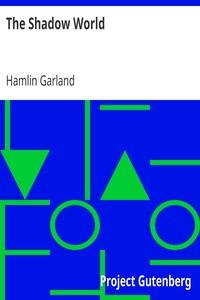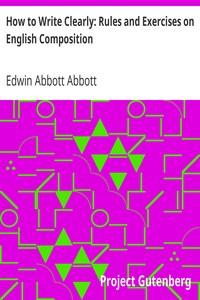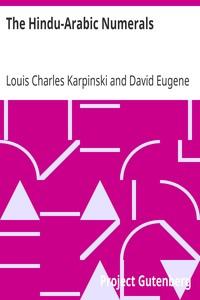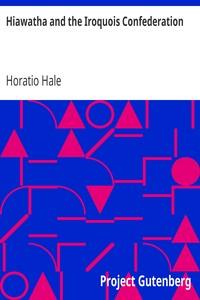Read this ebook for free! No credit card needed, absolutely nothing to pay.
Words: 497019 in 107 pages
This is an ebook sharing website. You can read the uploaded ebooks for free here. No credit cards needed, nothing to pay. If you want to own a digital copy of the ebook, or want to read offline with your favorite ebook-reader, then you can choose to buy and download the ebook.
CHAPTER
PRONUNCIATION OF ORIENTAL NAMES vi
INDEX 153
PRONUNCIATION OF ORIENTAL NAMES
B, D, F, G, H, J, L, M, N, P, SH , T, TH , V, W, X, Z, as in English.
, see .
, see .
THE HINDU-ARABIC NUMERALS
EARLY IDEAS OF THEIR ORIGIN
It has long been recognized that the common numerals used in daily life are of comparatively recent origin. The number of systems of notation employed before the Christian era was about the same as the number of written languages, and in some cases a single language had several systems. The Egyptians, for example, had three systems of writing, with a numerical notation for each; the Greeks had two well-defined sets of numerals, and the Roman symbols for number changed more or less from century to century. Even to-day the number of methods of expressing numerical concepts is much greater than one would believe before making a study of the subject, for the idea that our common numerals are universal is far from being correct. It will be well, then, to think of the numerals that we still commonly call Arabic, as only one of many systems in use just before the Christian era. As it then existed the system was no better than many others, it was of late origin, it contained no zero, it was cumbersome and little used, and it had no particular promise. Not until centuries later did the system have any standing in the world of business and science; and had the place value which now characterizes it, and which requires a zero, been worked out in Greece, we might have been using Greek numerals to-day instead of the ones with which we are familiar.
Of the first number forms that the world used this is not the place to speak. Many of them are interesting, but none had much scientific value. In Europe the invention of notation was generally assigned to the eastern shores of the Mediterranean until the critical period of about a century ago,--sometimes to the Hebrews, sometimes to the Egyptians, but more often to the early trading Phoenicians.
The first of the Arabic writers mentioned is Al-Kind , who wrote five books on arithmetic and four books on the use of the Indian method of reckoning. Sened ibn `Al, the Jew, who was converted to Islam under the caliph Al-Mmn, is also given as the author of a work on the Hindu method of reckoning. Nevertheless, there is a possibility that some of the works ascribed to Sened ibn `Al are really works of Al-Khowrazm, whose name immediately precedes his. However, it is to be noted in this connection that Casiri also mentions the same writer as the author of a most celebrated work on arithmetic.
Free books android app tbrJar TBR JAR Read Free books online gutenberg
More posts by @FreeBooks

: Colonial Records of Virginia by Various - Virginia History Colonial period ca. 1600-1775 Sources United States



: How to Write Clearly: Rules and Exercises on English Composition by Abbott Edwin Abbott - English language Composition and exercises Children's Instructional Books






